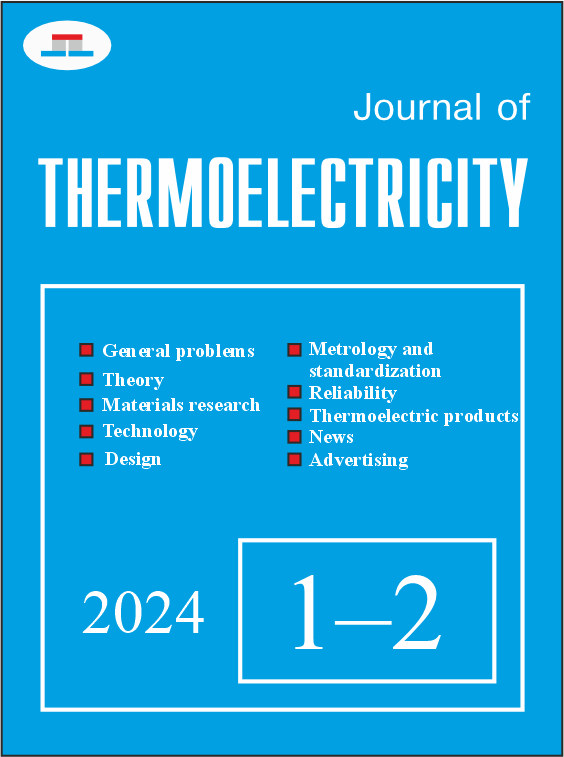Increasing the shock resistance of thermoelectric energy converters
DOI:
https://doi.org/10.63527/1607-8829-2024-1-2-5-8Keywords:
shock resistance, thermoelectric energy converter, mechanical stresses, strength of materials, Weibull approach, rigid fastening, elastic fasteningAbstract
By combining the strength of materials methods with the Weibull approach, the influence of the nature of fastening thermoelectric legs in a thermoelectric energy converter on the probability of its failure-free operation depending on the magnitude of the shock acceleration was investigated. It was proven that this acceleration, for a given probability of failure-free operation, significantly increases 7 times when replacing the rigid fastening of thermoelectric legs to ceramic plates with an elastic one.
References
1. Pysarenko G.S., Kvitka O.L., Umanskyi H.S. (2004). Strength of materials. Kyiv: Vyshcha shkola.
2. Park W., Barako M.T., Marconnet A.M. (2012). Effect of thermal cycling on commercial thermoelectric modules. 3d IEEE ITHERM Conference, 2012.
3. Weibull W. (1961). Fatigue Testing and Analysis of Results. Pergamon Press, 305 p.
4. Karri N.K. (2017). Reliable thermoelectric module design under opposite requirements from structural and thermoelectric considerations. Journal of Electronic Materials. DOI: 10.1007/s11664-017-5934-6.
5. A.A. Wereszczak and E.D. Case (2015). Mechanical response of thermoelectric materials. Oak Ridge, TN: ORNL/TM-2015/227, U.S. Department of Energy, 2015.
6. Zhao L.D, Zhang B.P, Li J.F, Zhang H.L, Liu W.S., et al. (2008). Solid State Sci., 10, 651 – 658.




